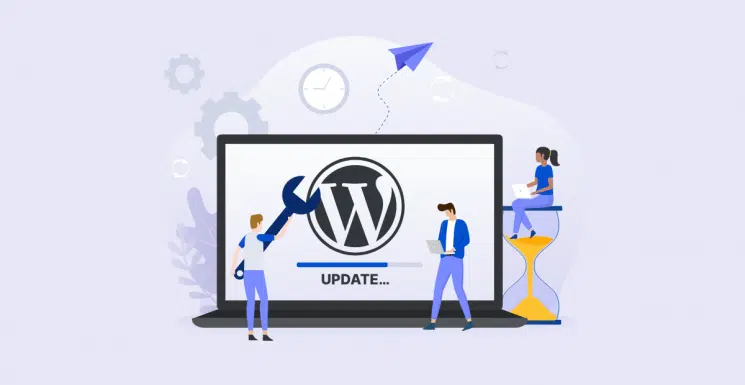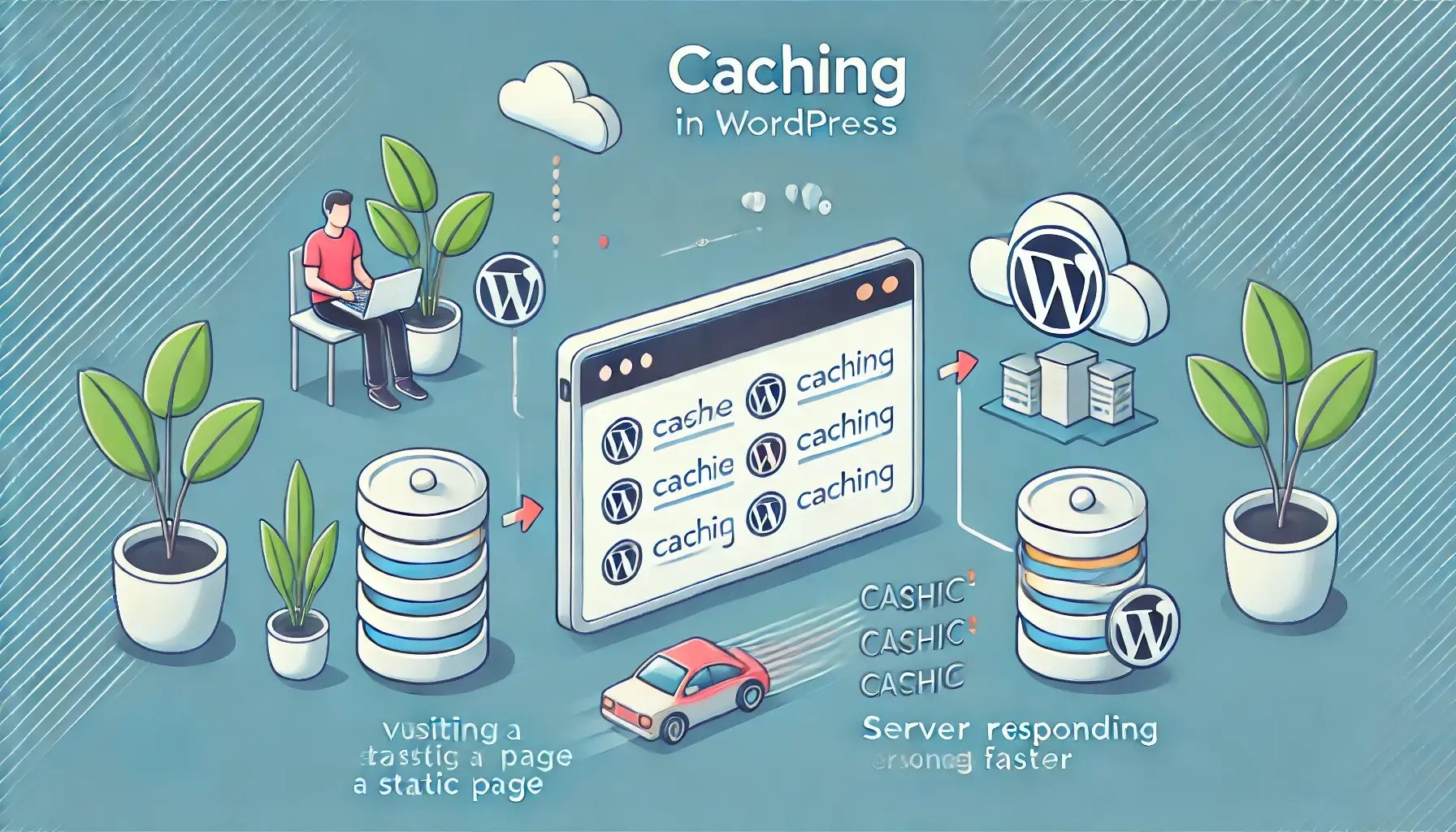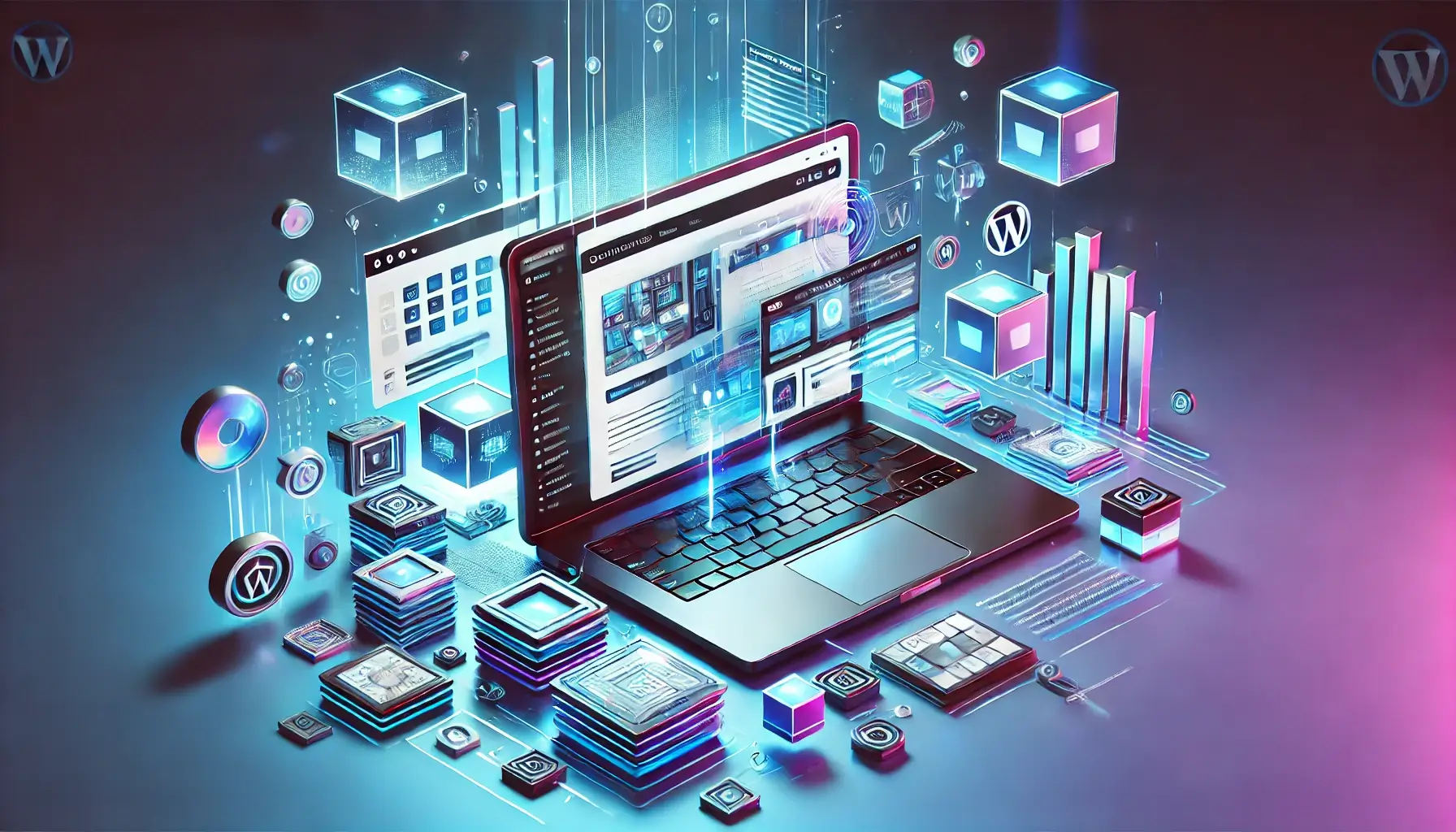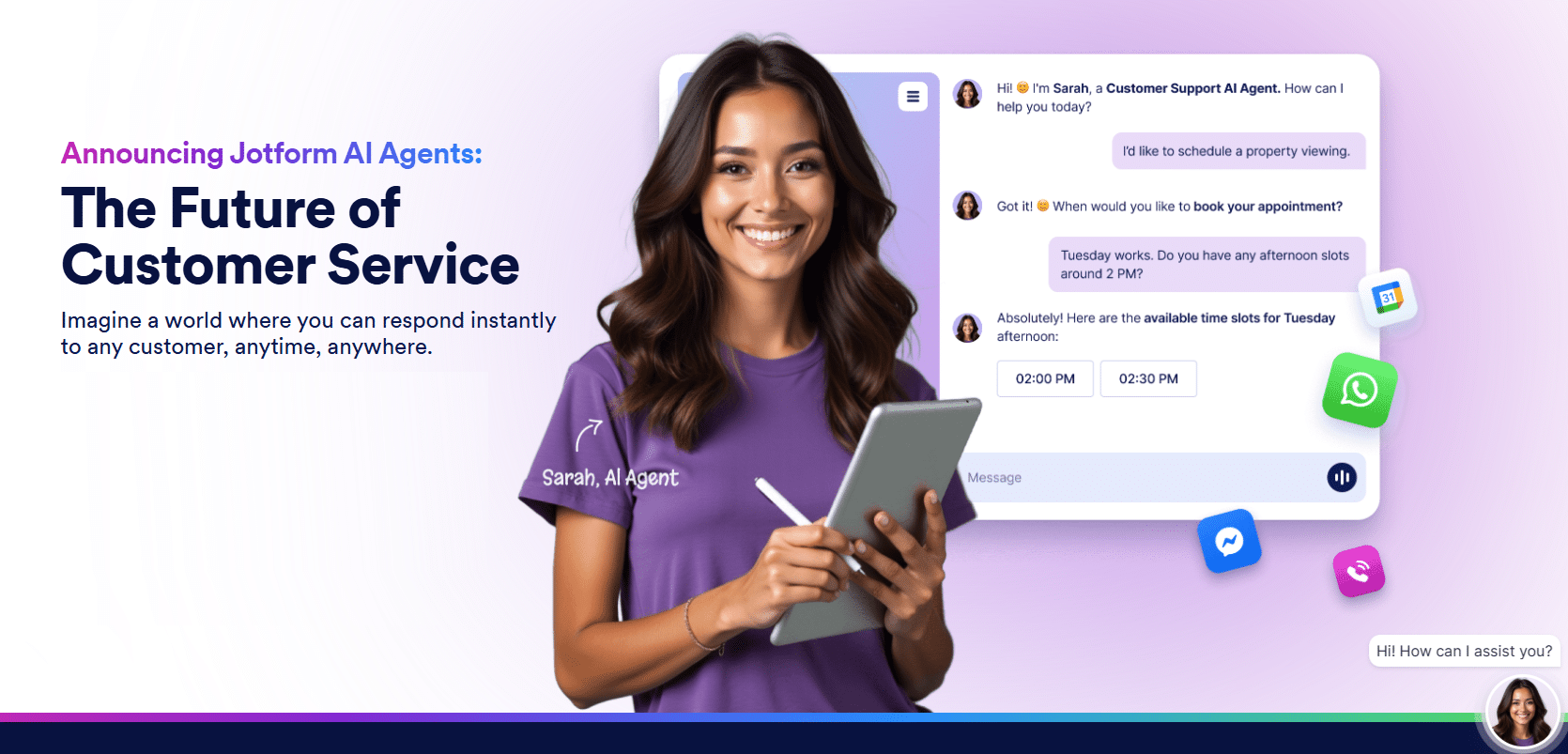Why Keeping Your WordPress Core, Themes, and Plugins Updated is Crucial for Your Website’s Health
Whether you’re running a personal blog, an e-commerce store, or a company website, WordPress is one of the most popular and versatile platforms available. In fact, WordPress powers over 40% of all websites on the internet today. But with great power comes great responsibility—and one of the most important tasks for any WordPress site owner is keeping the core software, themes, and plugins up to date.
It might not sound glamorous, but regularly updating your WordPress installation is one of the most vital things you can do to protect and optimize your site. Neglecting updates can lead to major issues: security vulnerabilities, performance slowdowns, compatibility errors, and even complete site breakdowns. In this post, we’ll break down why updates are so important, what can happen if you ignore them, and how to manage updates safely and efficiently.
1. Security: The #1 Reason to Stay Updated
Let’s start with the biggest reason: security.
WordPress is open-source software, and while that brings flexibility and a huge community of contributors, it also means the code is available for anyone to study—including hackers. Because WordPress is so widely used, it’s a big target for malicious attacks.
How Vulnerabilities Happen
When security vulnerabilities are found in WordPress core, plugins, or themes, developers patch them and release updates. But if you don’t apply those updates, your site remains vulnerable. Cybercriminals often scan the internet looking for outdated sites running older versions of plugins or WordPress itself. They exploit known flaws to inject malware, redirect traffic, or gain unauthorized access to your admin panel.
Real-World Examples
- Revolution Slider: A popular plugin that once had a major vulnerability allowing hackers to upload malicious files and take control of a site. Thousands of websites were compromised because users hadn’t updated.
- TimThumb: This image resizing tool was used by many themes but became notorious for its exploitable flaws. Even years later, sites using old versions remained vulnerable.
Keeping everything updated closes those security holes and keeps your site from becoming an easy target.
2. Performance Improvements and New Features
Software updates aren’t just about security—they often include performance improvements and new features that enhance your site’s functionality and speed.
WordPress Core Enhancements
With each major WordPress core release, developers optimize performance, improve database handling, add REST API improvements, and streamline code. For example, the Gutenberg editor and block-based editing experience were introduced in recent WordPress versions and have revolutionized content creation.
If you’re running an outdated version, you’re missing out on:
- Faster load times
- Enhanced user experience
- Better SEO performance due to improved page speeds
- New design tools and integrations
Plugin and Theme Updates
Themes and plugins are updated frequently to stay compatible with WordPress core. They also often introduce new features—like drag-and-drop capabilities, integration with third-party services, or improved UI.
When you skip updates, you don’t just miss new tools—you may also run into issues where features break or don’t display properly because they’re built for newer versions.
3. Compatibility and Site Stability
One of the most frustrating things a WordPress site owner can experience is a sudden crash or error that takes down the entire website. More often than not, this happens because of compatibility issues between the WordPress core, plugins, and themes.
How Compatibility Issues Arise
WordPress is a modular system. Each plugin and theme interacts with the core software, and sometimes with each other. If your theme was built for WordPress 5.7, but you’re running 6.3, certain features might not work—or worse, they could cause fatal PHP errors.
Similarly, if you update one plugin but leave another outdated, conflicts can arise, causing anything from layout issues to entire pages disappearing.
The Domino Effect
When one part of your site is outdated, it can create a cascade of failures:
- A plugin becomes incompatible and stops working
- The broken plugin causes a layout error in your theme
- Your contact forms stop sending messages
- Your checkout process fails, losing you sales
All of this could be prevented with regular updates.
4. Bug Fixes and Better Functionality
Every update—whether it’s for the core, a theme, or a plugin—contains bug fixes. Bugs can range from annoying little glitches (like a visual formatting error) to more serious issues (like broken forms, incorrect calculations, or missing content).
If your site is behaving oddly, it could be a bug that’s already been fixed in a newer version. Staying current with updates means you’re getting the most polished, stable version of every tool you’re using.
5. SEO and User Experience
Search engines like Google consider website performance, security, and user experience as ranking factors. Keeping your WordPress site updated directly affects all three.
Security and SEO
If your site gets hacked due to outdated software, it could be blacklisted by Google. This not only crushes your search rankings—it also scares away potential visitors with warning messages.
Speed and Usability
Updates often improve code efficiency and load times, which are directly tied to SEO rankings and bounce rates. Users expect websites to load in under 2 seconds. Outdated plugins or themes could be slowing your site down significantly.
6. Avoiding Technical Debt
Technical debt is a concept from software development—it refers to the future cost of taking shortcuts today. Ignoring updates builds up technical debt that you’ll eventually have to pay, often in the form of:
- Time-consuming troubleshooting
- Emergency fixes
- Hiring a developer to untangle a mess
When you skip updates for months (or years), you run the risk of being unable to update at all without breaking your site. This forces you into expensive rebuilds or migrations that could have been avoided with regular maintenance.
7. How to Update Safely
Okay, now that we’ve covered why updates are crucial, let’s talk about how to do it the right way.
Backup First
Always back up your site before running updates—this includes the database and files. That way, if anything goes wrong, you can roll back to a working version.
Use a Staging Environment
A staging site is a clone of your live site where you can test updates before pushing them live. Many hosting providers (like WP Engine, Kinsta, or SiteGround) offer one-click staging environments.
Update in Order
A good practice is to update in this sequence:
- WordPress core
- Themes
- Plugins
This order reduces the chance of compatibility issues.
Automate Where Appropriate
Some updates—especially minor security patches—can be safely automated. WordPress even supports auto-updates for plugins and themes now. Use this with caution and monitor your site regularly.
8. Common Myths About Updates
Let’s bust a few common myths that often lead to procrastination:
“If it ain’t broke, don’t fix it.”
This is one of the most dangerous mindsets for WordPress site owners. Just because your site seems fine doesn’t mean there aren’t hidden vulnerabilities or pending issues. Updates are often preventative.
“I’ll wait until there are more updates to do everything at once.”
Bundling updates increases the risk of multiple conflicts happening at once. Smaller, more frequent updates are much safer and easier to troubleshoot if anything goes wrong.
“I don’t need updates because I have a small site.”
Hackers don’t discriminate. Automated bots scan for vulnerable sites regardless of size or popularity. Even small sites can be turned into spam servers or malware hosts.
9. Tools to Help Manage Updates
There are plenty of tools that can make staying on top of updates easier:
- WP Fix It Care Plans: Daily updates and 24/7 site monitoring for any issues.
- ManageWP: Lets you manage multiple WordPress sites from one dashboard, including updates and backups.
- MainWP: A free alternative that’s great for agencies or developers managing multiple clients.
- Jetpack: Offers auto-update features and security monitoring.
- WP-CLI: A command-line tool for developers who want to script updates.
10. What to Do If an Update Breaks Your Site
Don’t panic—it happens to the best of us.
Here’s a quick checklist:
- Restore from your most recent backup
- Check the plugin/theme’s changelog or support forum
- Disable conflicting plugins via FTP or your hosting control panel
- Use a staging environment to test combinations
- Reach out to the developer or support team
Final Thoughts
Maintaining your WordPress site isn’t just about adding new blog posts or tweaking your design. It’s also about protecting your investment—your time, money, content, and audience.
Keeping your WordPress core, themes, and plugins up to date is the single most important thing you can do to ensure your website stays:
- Secure
- Stable
- Fast
- Functional
- Future-proof
Don’t treat updates like a chore. Make them a regular part of your site management routine, and your site—and your users—will thank you.
Need Help Staying on Top of WordPress Maintenance?
If all this feels a little overwhelming, you’re not alone. Many site owners choose to work with WordPress maintenance services or developers who handle updates, backups, and security monitoring on their behalf. Whether you DIY it or get help, what matters most is that it gets done.
Stay updated, stay safe, and happy WordPress-ing!
Let me know if you’d like this as a downloadable Word doc or if you want a TL;DR version for a newsletter or LinkedIn post!

















